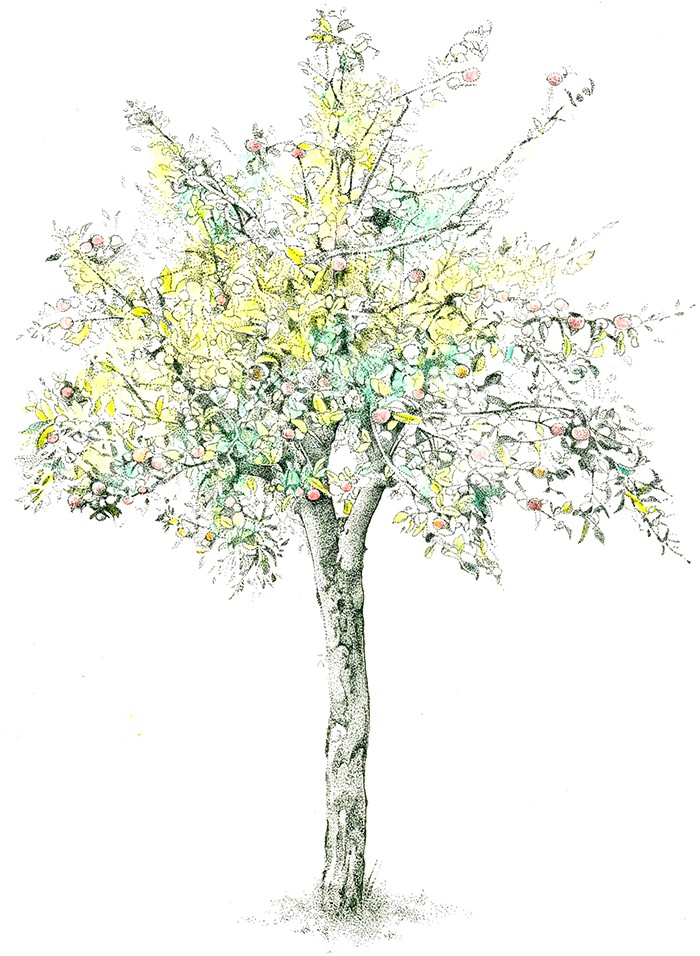City roots
The necessity of beauty and the service of trees
In order to get a sense of how Winnipeggers were thinking about trees during the first couple decades of the 20th century, I returned to local newspaper archives. I found a clear narrative emerging within the press which linked the maintenance of yards and the planting of trees with civic duty, largely because of what services trees could potentially provide the city.
Illustration by Gabrielle Funk
Writers in the Manitoba Free Press and the Winnipeg Tribune repeatedly stressed that individual city inhabitants had a shared responsibility for urban beautification. For example, one journalist wrote in the Tribune in 1906: “The front of the house is for the eye of the public and for the beauty of the city, and a man ought to have pride enough to do a little something (on) behalf of both.”
Through her research on trees in Ottawa, historian Joanna Dean has examined how they have often been framed in terms of the services they provide humans. Like trees in Ottawa, Winnipeg’s trees are consistently portrayed as providing city inhabitants with shade, air purification and beauty.
While part of the role trees played in service of the City Beautiful campaign was to make Winnipeg a more enjoyable and healthy space, another part had to do with presenting the city as a place of progress. Environmental scholar Michèle Dagenais argues that green spaces around the turn of the century were used to demonstrate the financial well-being and social status of the area, something most wealthy Winnipeggers were eager to convey.
Trees also provided monetary services, including increasing property values. One journalist argued that beauty benefited businesses, stating, “beautiful streets are a good investment, a lot with trees brings more than one without, a beautiful city will bring in greater monetary returns than an ugly one.”
Valuing trees for the services they provide to humans was as common then as it is now. However, Dean argues that this framing fails to account for ways in which trees are active agents with their own purposes.
Sometimes fulfilling their own needs can lead them to be more troublesome than pleasurable to us. Their shade can prevent other growth in our gardens, their roots can damage our sidewalks and foundations, and their branches can become tangled in our power lines. The storm that hit Winnipeg this October was distressing for many, both because of the devastation to our trees and because of the damage caused when they fell.
In 1909, George Batho wrote to an editor in the Tribune, expressing concern that these quickly growing plants had the potential to “completely shut off the house from the street, and instead of adding to the beauty of the lawn, they will effectively hide it.” Both then and now, the general response to beautiful trees that become inconvenient is to cut them down.
Trees do the same work for us as they did for Winnipeggers in the early 20th century. They provide shade, they add beauty to our homes and parks, and they clean our air – a job that is as important today as ever. But we should not forget that trees have their own goals that do not always align with ours. We can enjoy the services they provide for us, but we should also remember and respect their agency.
Kathryn Boschmann is a doctoral student in the history department at Concordia University whose research focuses on the relationship between religious communities and Indigenous activism in Winnipeg. She was born and raised in Manitoba and has made Winnipeg her home.
Published in Volume 74, Number 12 of The Uniter (November 28, 2019)







